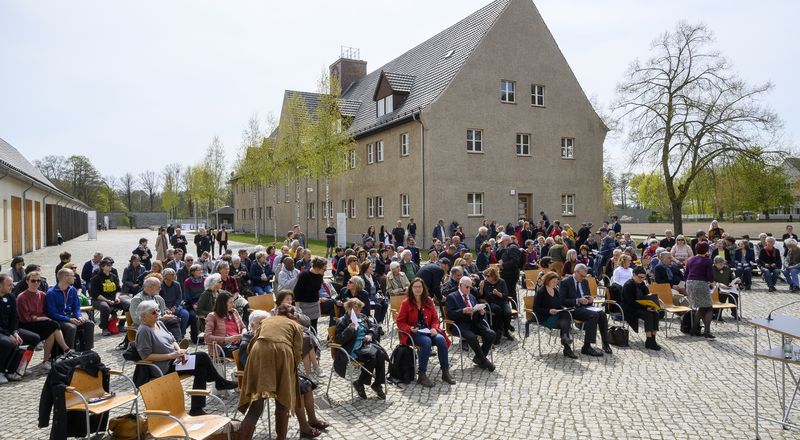From April 29 to May 1, 2022, the Ravensbrück Memorial and the International Ravensbrück Committee hosted commemorative events to mark the 77th anniversary of the liberation of the Ravensbrück women's concentration camp by the Red Army. For the first time since the start of the pandemic, the events took place on site again, with a special focus on the opening of the Franco-German traveling exhibition “Resistance - Persecution - Deportation. Women from France in the Ravensbrück concentration camp 1942-1945”.
On Sunday, May 1, the central commemorative event took place in front of the former commandant's office. After a welcoming address by the director of the memorial, Andrea Genest, Anne Cordier (International Ravensbrück Committee), the mayor of Fürstenberg, Robert Philipp, Ravenbrück survivor Lili Leignel, Brandenburg's Minister of Culture Manja Schüle and the author Géraldine Schwarz spoke. Cantor Gabriel Loewenheim recited the Kaddish and the prayer “El Male Rachamim”.
Afterwards, three memorials were dedicated at the new memorial site: for Margaretha Crombeen, who died in Ravensbrück in 1945, initiated by the veterans' association of the municipality of Wichelen (Belgium), for lesbian women and girls in the Ravensbrück concentration camp and for the prisoners from Ravensbrück who were used as forced sex labor in various concentration camps.
The exhibition “Resistance - Persecution - Deportation”, which opened on the anniversary, sheds light on the fates of French women who were deported to Ravensbrück and shows their biographies in the context of occupation, imprisonment and liberation. It was also created in collaboration with relatives of former prisoners, whose private archives provide new insights into the history and aftermath. Media stations and a website with reports from the daughters and granddaughters of survivors complement the traveling exhibition, which will be touring Germany and France in the coming years. The exhibition was made possible thanks to the kind support of the Tour du Monde Foundation.
Background
Between 1939 and 1945, 132,000 women, 20,000 men and 1,000 young women were registered as prisoners of the “Uckermark youth protection camp” at Ravensbrück concentration camp. The prisoners came from over 40 nations and included numerous Jews as well as Sinti and Roma. Tens of thousands were murdered or died of starvation, disease or medical experiments. After a gas chamber was built at the end of 1944, around 6,000 prisoners were gassed by the SS. At the end of April 1945, the SS drove tens of thousands of prisoners on death marches towards the northwest. 3,000 sick people left behind in the main camp were liberated by the Red Army on April 30, 1945.







